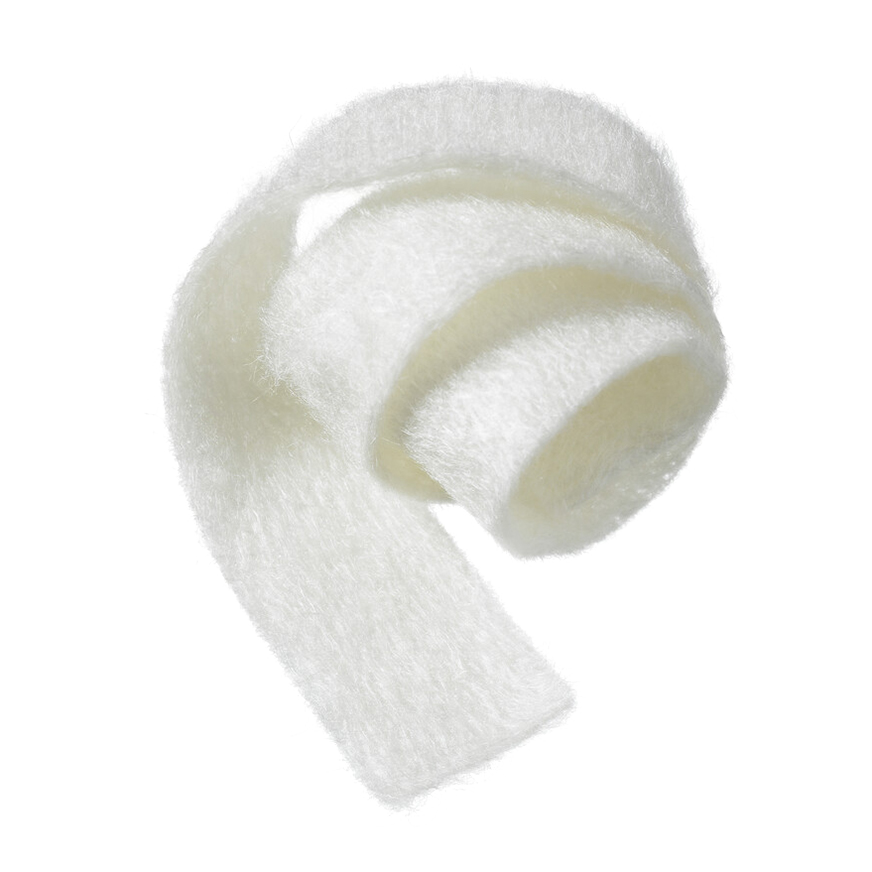Recommended for cavity filling
The design and the structural integrity of the dressing allow you to cut the dressing and make it fit to wounds of many sizes, shapes and depths. The dressing will conform to the wound bed, which is important for the wound healing process.
High dressing integrity
The high dressing integrity allows for one-piece removal of the dressing with minimal pain and trauma.1,2
Minimized risk of leakage and maceration
The superior absorption of Biatain® Alginate 1,2 and the gel formation, which locks the exudate inside the dressing, prevent leakage that can damage the periwound skin.
Documented hemostatic effect
Contrary to hydrofibre dressings, Biatain® Alginate has documented hemostatic effect, i.e. the ability to arrest blood flow in minor bleedings due to the release of calcium ions from the dressing.4,5
Mode of action
On contact with wound exudate, Biatain® Alginate converts to a soft, cohesive gel that provides an optimal moist wound healing environment.2
Product composition
Biatain® Alginate is an alginate dressing consisting of 85% alginate and 15% carboxymethylcellulose (CMC).
Usage
Biatain® Alginate can be used on all moderate to heavily exuding partial to full thickness wounds. Biatain® Alginate may assist in supporting the control of minor bleeding in superficial wounds. Biatain® Alginate can be used with compression therapy. Biatain® Alginate should not be used on dry or lightly exuding wounds or to control heavy bleeding. Biatain® Alginate is indicated for pressure ulcers, venous leg ulcers, arterial ulcers, diabetic foot ulcers, donor sites or traumatic wounds.
Key benefits
- The unique dressing integrity allows for one-piece removal of the dressing.
- Biatain Alginate has a documented hemostatic effect.
- Contrary to hydrofibre dressings, alginate dressings have a hemostatic effect, i.e. the ability to arrest blood flow in minor bleedings due to the release of calcium ions from the dressing.
- Biatain Alginate is ideal for cavity filling.
- The design and the structural integrity of the dressing allow you to cut the dressing and make it fit to any size, shape or depth of a wound.
- The dressing will conform to the wound bed, which is important for the wound healing process.
- Biatain Alginate is available as dressing and ribbon.
References
1. Thomas S et al. www.dressings.org/TechnicalPublications/PDF/Coloplast-Dressings-Testing-2003-2004.pdf
2. Timmons J. Alginate and hydrofiber dressings. Professional Nurse 1999:14(7).
3. http://www.worldwidewounds.com/1998/june/Alginates-FAQ/alginates-questions.html
4. Segal HC et al. The effects of alginate and non-alginate wound dressings on blood coagolation and platelet activation. Journal of Biomaterials Applications 1998:249-57.
5. Elalamy I and Robert F. Etude in vitro des effets proactivateurs plaquettaires de deux pansements: Alginate pur (Algostéril) et Alginate-CMC (SeaSorb Soft), etude sur plasma riche en plaquettes. CPC France 2007.

